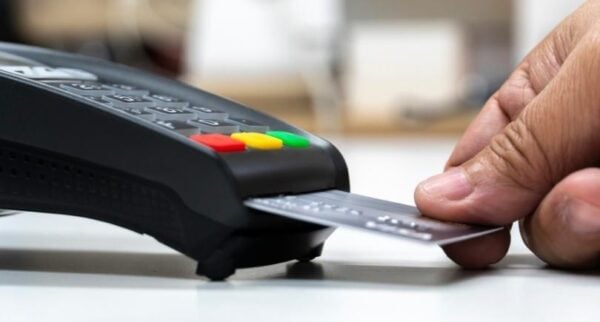For the savvy traveler, credit cards that allow you to rack up miles can be fabulous financial tools when used responsibly. After amassing enough rewards, you can redeem miles for free flights, upgrades, products, services, or cash. As more people take to the skies after being grounded by COVID-19– according to the Bureau of Transportation Statistics air passengers increased 607% from May 2020 to May 2021– travel credit card offers are heating up.
Here are seven great ways to squeeze every inch out of the miles you earn with these cards:
How to maximize airline miles
1) Get the biggest welcome bonus you can afford
Start at the beginning. Look for a credit card that has a generous welcome bonus, then determine whether or not you can meet the minimum spend required to earn that bonus. For example, new CardName discontinued holders can earn signup_reward bonus miles after you spend signup_bonus_spend_amount in eligible purchases on your new card in your first six months of card membership. (American Express is a CardRatings advertiser; terms apply). In general, larger welcome bonuses require higher minimum spends, so review your budget to make sure you can hit that threshold while still satisfying the entire balance in full when the bill is due. If you don’t, the revolved balance will be subject to interest charges. Those fees could erode or even eliminate the value of your miles.
Furthermore, don’t choose a card just because its bonus is attractive. Be sure that the card makes sense for your lifestyle on an ongoing basis. For instance, if United is your preferred airline and you rarely fly Delta, it’s probably not a great idea to apply for a Delta credit card, no matter how tempting the welcome bonus may be.
2) Go for the right rewards structure
As you use your credit card, miles will begin to add up; not all credit cards earn rewards the same way though. Some credit cards have a flat-rate rewards structure while others are based on where and how you use the card. Flat-rate cards are the simplest since you will always know how much you will accumulate when you use the card. The CardName, for instance, features a flat-rate structure, offering two miles for every dollar you charge, no matter what you purchase or where you make the transaction, plus five miles for every dollar spent on hotels, vacation rentals and rental cars booked through Capital One Travel. On the other hand, with the CardName, a tiered-rewards card, you will earn 5X on travel purchased through Chase Travel℠, 3X on dining, select streaming services and online groceries, 2X on all other travel purchases, 1X on all other purchases, $50 Annual Chase Travel Hotel Credit, plus more. If you’re certain that you will frequently be using your card on purchases with elevated reward rates, a tiered-rewards card can make great sense. If not, a flat-rate rewards card will likely be the better choice.
3) Pay for the group, then recoup
No matter which type of card you get, accumulating miles can be slow going when you just use them for your own expenses. You can add more miles to the pool by paying for other people’s expenses as well. Imagine you go out to dinner with a large group of friends, and the bill is $500. If you use a card where you earn two miles for every purchase, you would net 1,000 miles. Or maybe you’re going on a trip with a bunch of relatives. If you buy everyone’s flights with your card that earns you three points for every dollar, and the total is $3,500, 10,500 miles will be in your rewards bank. The key is to have each person repay you immediately so you don’t wind up with a large debt – and needing to harangue your loved ones for the money.
4) Consider cashing out your miles
If you don’t have specific travel plans, your miles can be put to work in alternative ways. With the CardName, for example, you can easily convert your miles into a statement credit to cover the cost of other travel purchases, from hotel accommodations to car rentals, or as cash that you can use for anything you like.
5) Economize to maximize
When you redeem your points for flights, you will usually have the choice to select the full range of seat classes, from basic economy on up to business or first class. The lower the price, the fewer miles you will have to use to book the flight; if you’re really interested in stretching your miles to their fullest potential, coach will likely be the way to go. That doesn’t mean you have to sacrifice luxury though. Many travel credit cards come with other benefits that make your travel experience special. Just one example is the CardName, which offers two one-time passes to the United Club each year for your card anniversary, and up to a $120 credit every four years for your Global Entry, Nexus or TSA PreCheck application fee, which allows you to breeze through security lines.
6) Splurge when going the distance
Of course this doesn’t mean that you should automatically reject the comfort and elegance of flying business or first class. Just weigh the miles-cost benefit before you book. Concentrate on flights where you need the extra legroom and other niceties of sitting in the front. For long flights, using reward miles for the preferred class is usually a better deal than paying cash for the upgrade. That’s because the real value of a business or first-class seat isn’t the market price of that seat, so miles can stretch further.
7) Don’t be shy about contacting customer service
You won’t know how much your flight will cost in miles if you book through a third-party travel website such as Expedia, so you will have to make your reservations via the airline’s website. When you do, there will usually be a clear option to see how much the flight will be in dollars or miles. Still, figuring it all out, from finding the best flight to understanding conversion rates, can be confusing and time-consuming. If so, don’t guess. Call the airline’s reservation desk for assistance. There might be a fee to have the agent book the flight for you over the phone, but it can be money well spent. If a nominal fee can make your life a lot easier and ensure that you get the most out of your miles with the correct reservation, go for it.
In the end, it’s not difficult to use rewards credit cards that offer miles. Just get the credit card that best fits your lifestyle, charge carefully on things that will boost your miles while keeping your debt to zero. And once you have enough, trade them in for the things you want and need— including that vacation that you’ve been putting off for too long.
See Rates and Fees for the CardName


